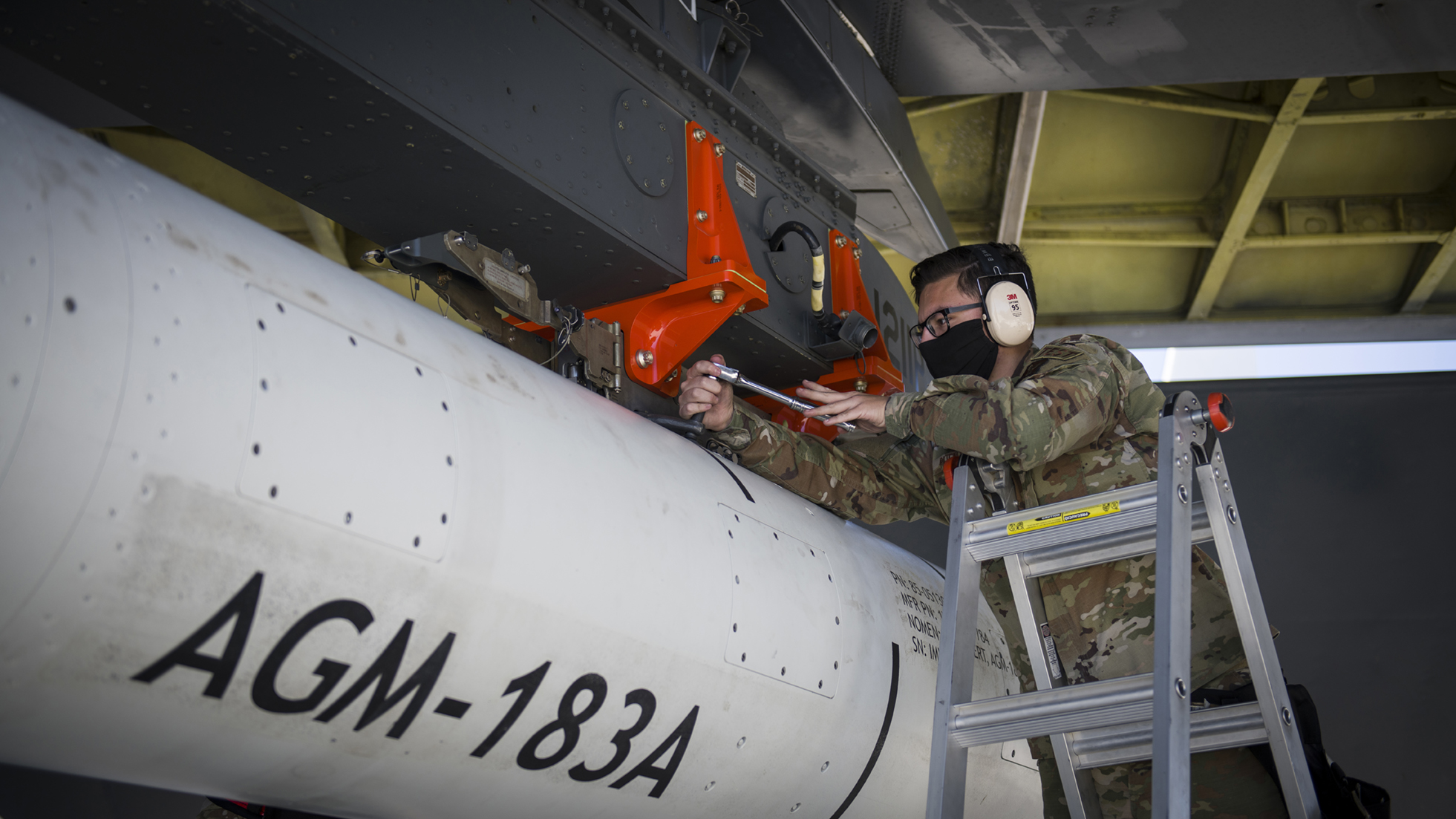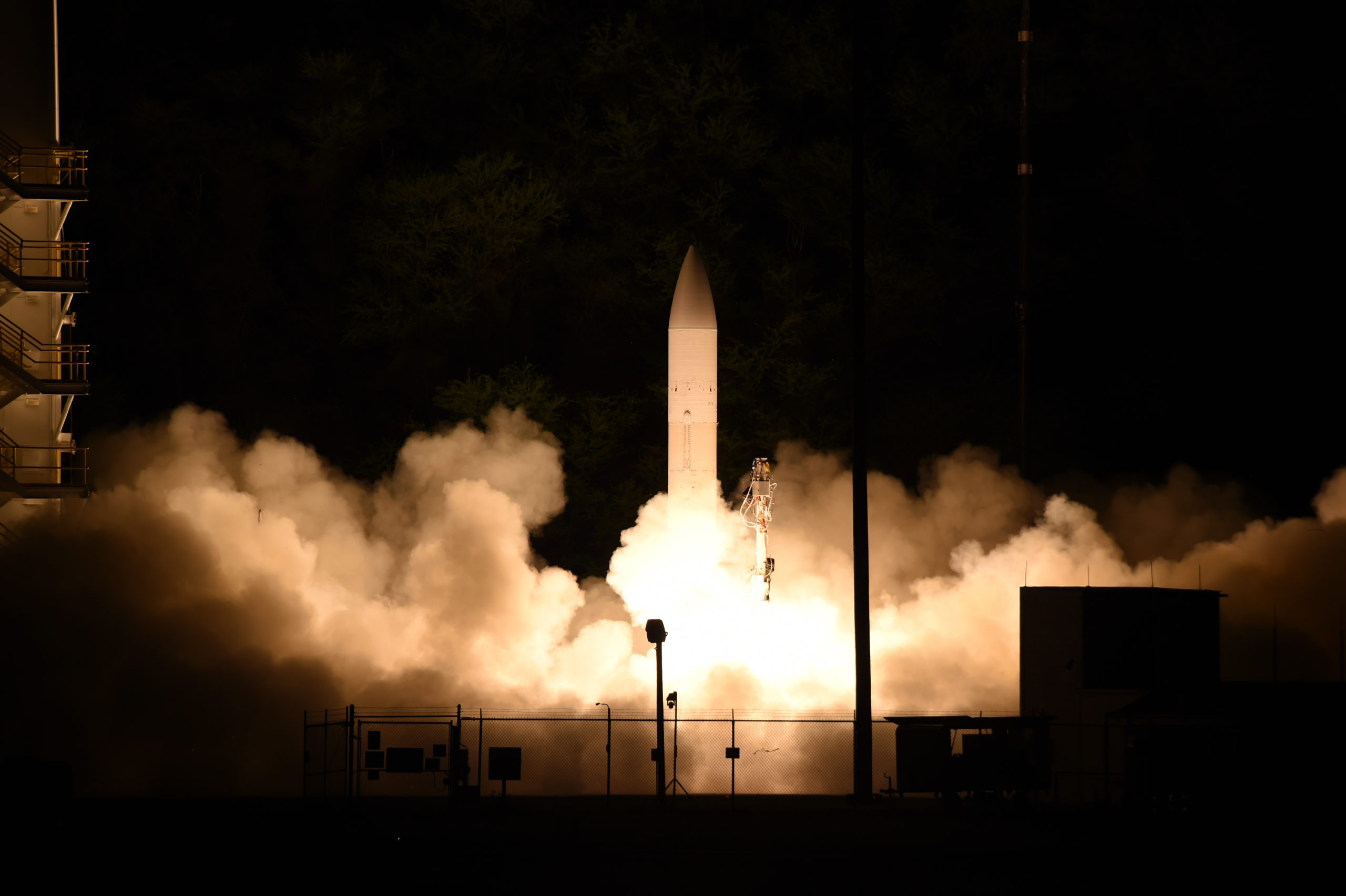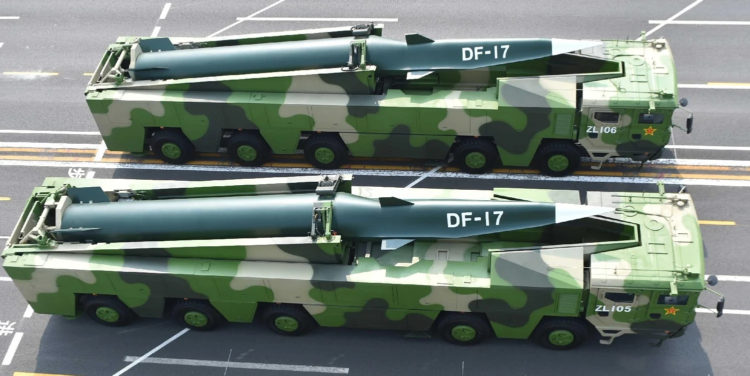The Financial Times dropped two bombshells on the international and defense community over the weekend. They released this stunning information late Saturday night, on October 16, 2021. The first revelation was that back in August, China successfully conducted a test of a nuclear-capable hypersonic missile. The second, and perhaps more unexpected part of that report, is that the test allegedly caught the U.S. intelligence community completely by surprise.
The fact that China is developing hypersonic missiles is not new information; the U.S. has known this for years. The Pentagon even has nomenclature for the Chinese development of these weapons. However, according to the five sources quoted by the Financial Times, the capability displayed during this test flight was unexpected.
During the test, this missile circled the earth in a low-earth orbit, and then descended on its target — which it missed by 24 miles. In the report, these sources were quoted as saying, “The test showed that China had made astounding progress on hypersonic weapons and was far more advanced than U.S. officials realized.”
On Monday, October 18, 2021, the Chinese government denied that allegation. During a routine press briefing, Chinese Foreign Ministry Spokesman Zhao Lijian said, “It was not a missile, it was a space vehicle,” after he was asked about the launch. He added that the launch was a “routine test” as a part of the development of reusable technology for the vehicle. He added that reusability can “provide a cheap and convenient method for humans to peacefully travel to and from space.”
With that denial, it’s likely that China is simply playing a game of semantics.

What Are Hypersonic Weapons?
A hypersonic missile is a weapon that flies five times (or more) faster than the speed of sound. In reference to hypersonic weapons, there are two distinct technologies. What separates the two types are their thrust and propulsion systems, and how they behave in flight.
The first, hypersonic cruise missiles, are similar to “normal” cruise missiles. They are like any other missile, that they rely on aerodynamic flight and a self-propulsion system; they carry their own propulsion through the entire flight. The United States Air Force is expected to deploy their first air-launched hypersonic cruise missiles soon, in FY 22.
The second type of hypersonic weapons, boost-guide or maneuverable reentry vehicles, function more like ballistic missiles. They are mounted on extremely powerful rocket boosters with a chemical propellant, similar to other spacecraft. These rocket boosters also often work in stages, and they detach once the fuel runs out. While this sounds like any other ballistic missile or spacecraft being launched into space, this is also where it gets different.
The booster rockets for hypersonic weapons can propel the weapon up to speeds over twenty times the speed of sound. After several minutes of power, these weapons are placed on a trajectory that does not take them high into space, like a ballistic missile. These missiles have a low trajectory and re-enter the atmosphere very quickly. At this point, they glide without power and no additional thrust. They can, however, continue to maneuver and fly for thousands of miles. Also adding to their danger is that low trajectory, which creates a shorter radar detection time after re-entry.
Semantics and Splitting Hairs
Every government lies. Especially when it comes to defense and state secrets. It’s also no secret or surprise that Communist China lies more often than other governments, with all that said. It should be no surprise that they would be lying now or denying what the entire world now knows. The likelihood is, they are lying and telling the truth, at the same time. Trying, perhaps, to hide the truth in plain sight.
Are boost-glide and maneuverable re-entry weapons space vehicles? Technically, yes, they are. Just as the recent launches into “space” from Blue Origin and Virgin Galactic barely made it into space, they did, however, technically, make it into space. To that point, Chinese Foreign Ministry Spokesman Zhao Lijian would be speaking accurately. Hypersonic weapons leave the atmosphere and then come back; they are space vehicles.
By not calling it a missile, they are possibly splitting hairs or justifying their deception. Again, not surprising. The other aspect of the statement, however, also is worth consideration: the part about reusability.
There might also be other literal truths within the denial, by referencing reusable technologies in the rocket boosters. Most rocket boosters are reusable and have been for years. It’s hard to know if a weapon like this would be reusable or not. If the world gets to the point of using these kinds of weapons, it would likely not even matter once everyone launches their nuclear missiles. In the present time, however, reusability for testing and development is essential even if not for actual military deployment. So perhaps they were testing reusable components, for a re-entry “space vehicle” if only for the propulsion systems. For conventional weapons, it makes a lot of sense.

Why Is This Hypersonic Weapons Test Significant?
It seems there is not a consensus in the defense community whether hypersonic weapons are more “effective” or inherently more dangerous than ballistic missiles. There are those who assert these weapons will change warfare, treaties, and the rules of war. There are others who feel these weapons are unstoppable and dangerous as “first-strike” weapons.
Ballistic missiles are also extremely fast, and faster than hypersonic weapons. Ballistic missiles can also be intercepted, so it’s possible that hypersonic weapons can also be intercepted if considered on the basis of speed.
The issue is also whether hypersonic weapons will be visible via radar, or for how long, which will be imperative to stop them. If they are not as easy to see on the radar, interception will be a clear challenge. Covering the entire United States with an interception system would also be an extremely huge and expensive undertaking. Right now, only portions of the country are protected.
The recent test from China is significant because it increases their attack range, by having the capability to orbit the earth and deliver ordnance to any target, anywhere on Earth, including the United States. Whether these weapons would be deployed with a nuclear or conventional warhead, are less relevant when considered in terms of reach. A weapon flying at Mach 20 — more than 11,000 miles per hour — in a low orbit, can reach targets in an extremely short period of time. Combined with the fact that it might be hard to detect, and maneuverable, the considerations are not insignificant.
For example, a submarine sitting 1,000 miles off the coast — any coast — could hit its intended target with a hypersonic missile in 5.5 minutes. While there are two types of hypersonic missiles to consider, it’s the reach and technology that are the concern. Even though it missed the intended target by 24 miles, China’s test shows significant development.
Why Did China’s Hypersonic Missile Miss its Target?
With the attention this revelation has received in the media over the last few days is warranted, that last point is important. It missed. Twenty-four miles is certainly a small number when considered against the 40,000-mile journey around the globe. However, in the space and military world, and in the age of precision munitions with this kind of advanced technology, twenty-four miles is huge. It’s not quite as large of a margin of error with a nuclear warhead, yet even then, it’s not small. In terms of conventional weapons, the more likely application, it’s a costly error and renders the capability completely irrelevant.
There are a couple of possible reasons why this hypersonic weapon missed its target. It’s also relevant because although the test and overall capability itself surprised everyone, the miss shows they are not as advanced and far along with vital technology needed for the whole system to work. Launching missiles long distances is not the hard part. Guidance systems and hitting targets at great distances are the hard parts.
The temperature of a hypersonic weapon can reach 4,000º F (2,200º C). Steel melts at around 1,370º C, and titanium melts at around 1,670º C, as explained by John Varley, vice-president of Lockheed Martin Missiles and Fire Control’s Close Combat business unit.
“Even then, metallic thermal shields can be heavy and limit range and maneuverability. And, traditional carbon-carbon manufacturing methods can require a high degree of touch labour,” says Varley. “New materials and manufacturing methods to rapidly produce lightweight and robust thermal protection systems will be a game-changer.”
And that is just on the outside. The inside — where the electronics and guidance systems are — are also susceptible to heat damage. “Electronic components are analogous to space heaters. Those space heaters live inside a thermos, the hot structure of the vehicle, which is surrounded by a convection oven, the freestream air,” he says. “It’s important to know how to keep the ‘space heaters’ from burning up, and keep the ‘thermos’ from melting both inside and out.”
If the Chinese hypersonic orbital bombardment vehicle missed, this is likely why. They haven’t figured out the guidance system, avionics, the metallurgy to protect the entire device, and how to properly communicate in order to maneuver on target. The hard part.
Future Considerations
Hypersonic weapons run the risk to create and are creating a new arms race. Just like nuclear weapons changed warfare forever, and inter-continental ballistic missiles changed the world a step further, hypersonic weapons are the next generation of a change in global warfare.

Hypersonic cruise missiles are like long-range, precision sniper weapons. They could take out buildings, aircraft carriers, or specific point targets with little warning. Boost-glide hypersonic missiles offer even more reach, with a shorter radar detection window, with potentially even more payload and firepower. The capabilities being developed by China, Russia, and North Korea, should not be taken lightly.
Given that China has kept these capabilities a secret for so long, the U.S. and the rest of the world should take note. If they continue to do so under the guise of a space vehicle, the U.S. should immediately make plans to assess the threat, and appropriate countermeasures. With China, the U.S. should not take anything at face value.
The U.S. intelligence community might also need to accept the fact China is further along in this technology than expected. Current priorities likely lie in the offensive capability of hypersonic weapons. Just as much, priority needs to be given to the defensive capabilities of hypersonic weapons.










COMMENTS
You must become a subscriber or login to view or post comments on this article.